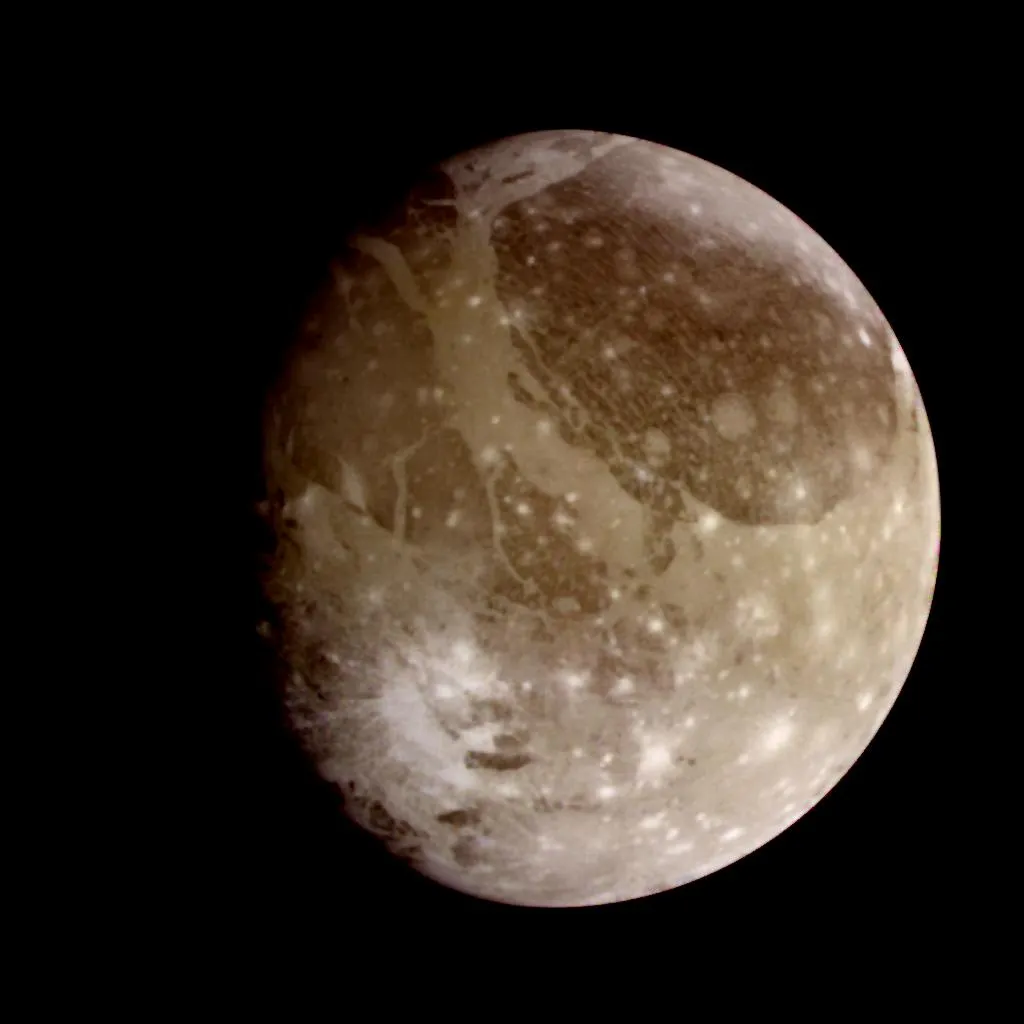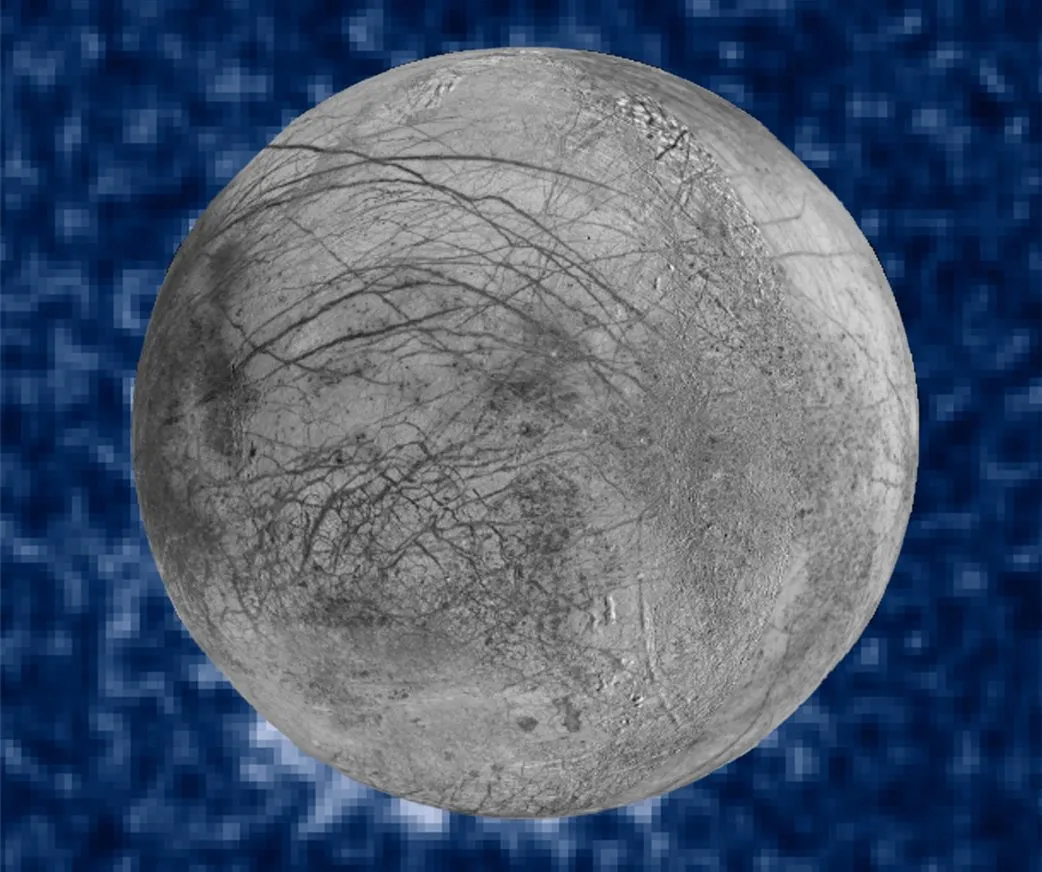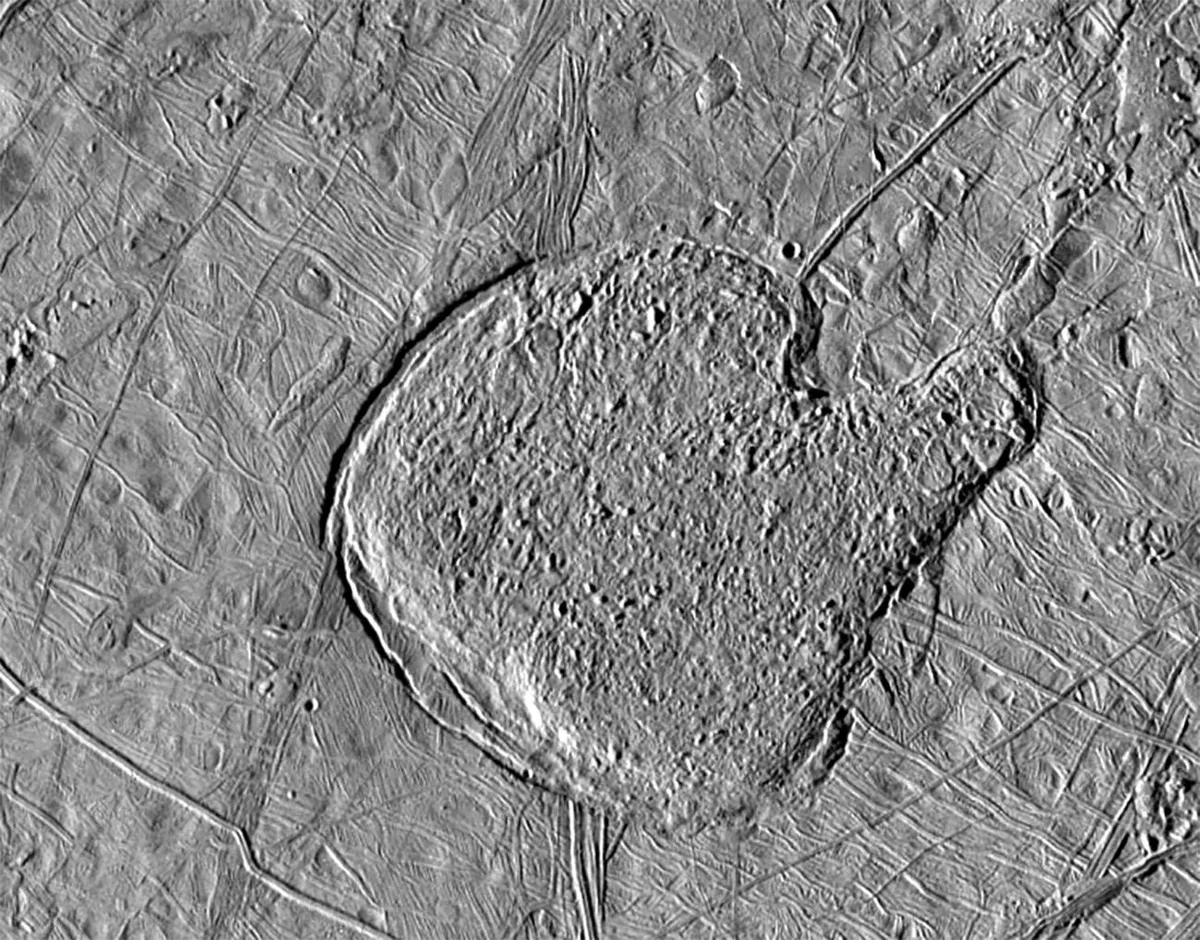Earth is often considered to be a water world: over 70% of our planet’s surface is covered in oceans.
Since our planet orbits within what’s known as the ‘Goldilocks zone’ around the Sun, the warmth it receives is just right for keeping water in its liquid state.
But there are several moons in the outer Solar System that are also known to hold significant bodies of liquid water.
Could these ocean worlds in our Solar System be habitable worlds, where life might take hold?

Solar System subsurface oceans
Beyond Earth’s orbit, the Sun doesn’t deliver enough warmth to keep water liquid and so these extraterrestrial oceans, or exo-oceans, are kept liquid by a different source of energy.
Many of the moons orbiting the gas giant planets Jupiter and Saturn experience significant amounts of tidal heating.

The gravitational pull of the parent planet causes two symmetrical bulges on the moon, which move as the moon rotates.
This continual flexing of the globe creates internal friction, which is converted into heat.
It’s like how a rubber racquetball or squash ball warms up through being repeatedly deformed as it’s thwacked around the court.
For icy moons like Europa orbiting Jupiter, and Enceladus around Saturn, this tidal heating has thawed part of the frozen shell into large bodies of subsurface liquid water.

Ganymede, which orbits 60% further out from Jupiter than Europa, also experiences enough tidal heating for a substantial underground ocean.
In fact, Ganymede might even possess a stack of ocean shells separated by different forms of ice.
Saturn’s giant moon Titan likely hosts a water ocean beneath its crust, kept liquid with ammonia antifreeze.
And there is even some evidence that another Saturnian satellite, Mimas, may have previously contained a subsurface ocean, as well as a small moon of Uranus, Miranda.

Ingredients for life
Liquid water is required for all life on Earth, so might some of these exo-oceans also harbour alien life?
Water alone is not enough; life also needs organic chemistry to build its complex molecules, and sources of energy in its environment.
Hydrothermal vents on the seafloor provide chemical energy supporting ecosystems in the dark depths of Earth’s own oceans.
So it’s thought crucial that, in order to support life, the bottom of an exo-ocean must be in contact with the moon’s rocky mantle.
As a result, Europa and Enceladus are thought to be the most promising candidates.

Exploring the icy moons
One of the major drivers for space exploration is astrobiology – the search for life beyond Earth.
Plenty of orbital probes and rovers have been sent to Mars, partly because it’s relatively easy to get to, but there are also exciting missions on their way to Jupiter and its moons.
ESA’s Juice (Jupiter Icy Moons Explorer) mission launched in April 2023 and will arrive at the Jovian system in July 2031.
It will fall into orbit around Ganymede in December 2034, but will have two close fly-bys of Europa before that.

Juice carries a ground-penetrating radar that will hopefully reveal the thickness of the ice shell above Europa’s ocean, as well as other instruments that will map salts and, potentially, organic molecules on the surface.
NASA’s Europa Clipper probe launched in October 2024 and will begin a series of almost 50 close approaches of Europa in April 2030.
This mission will also be investigating the potential habitability of the moon, as well as looking out for plumes where water is squirting out into space.

It will help identify the best landing site for a proposed future Europa Lander, too.
Such a mission would touch down on the moon and search for signs of oceanic life preserved in the surface ice.
In the future, there are proposals to develop a ‘cryobot’ able to melt its way through the surface ice of Europa or Enceladus and then release autonomous submersibles to explore the ocean.

Credits: NASA/ESA/W. Sparks (STScI)/USGS Astrogeology Science Center
What life might exist?
We know from studying hardy ‘extremophile’ microbes on Earth that life can tolerate an incredible range of conditions, and feed itself on inorganic energy sources like iron and sulphur gushing out of hydrothermal vents.
Lake Vostok is a body of water 4km (2.5 miles) beneath the Antarctic ice sheet, thought to be completely sealed off from the rest of the world.
It’s therefore taken to be a close analogue of the subsurface environment on Europa or Enceladus.

Drilling studies have identified the DNA of numerous microbes which, if not introduced via contamination from the surface, would bolster the hope of finding life in the icy moons.
If the subsurface oceans in Europa and Enceladus are habitable environments, the sort of life they could host is almost certainly only simple single cells like bacteria.
However, some scientists argue that there’s enough oxygen created in the surface ice, which could be transported down into the ocean beneath, to support more complex, multicellular lifeforms.
So perhaps someday in the future, you’ll be able to visit an aquarium to gaze upon Europan jellyfish…

Over recent decades of space exploration, we’ve realised that Earth is far from being the only water world in the Solar System.
Europa and Enceladus contain not only subsurface oceans, but also hold the possibility of finding extraterrestrial life.
And missions already en route to the Jupiter system promise some really exciting discoveries.
Are these icy moons the best places to look for life in elsewhere the Solar System? Let us know your thoughts by emailing contactus@skyatnightmagazine.com
